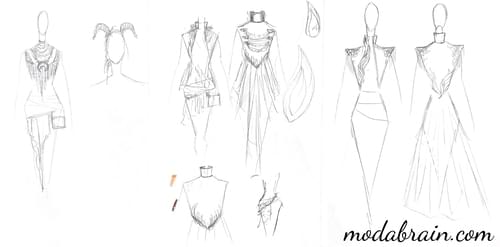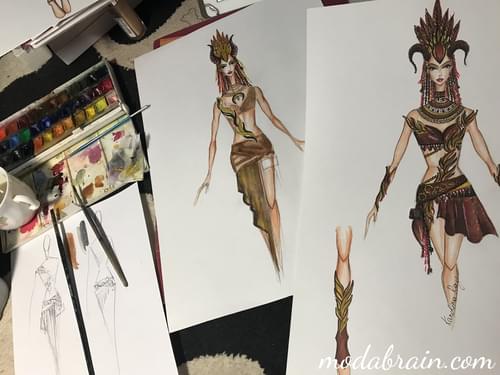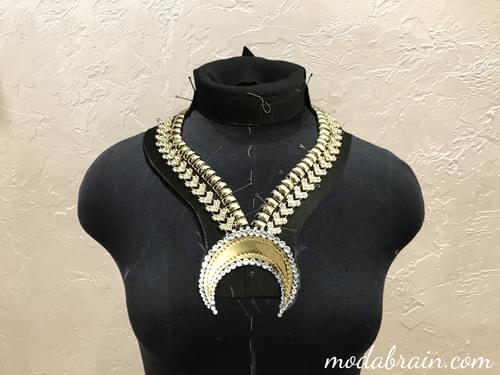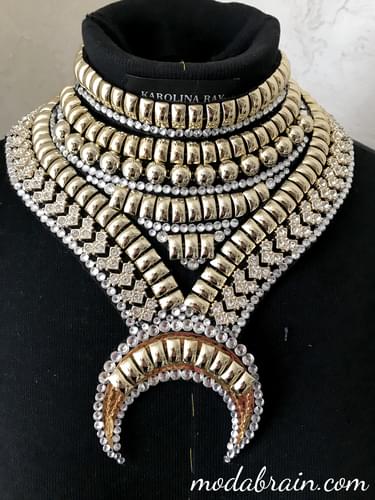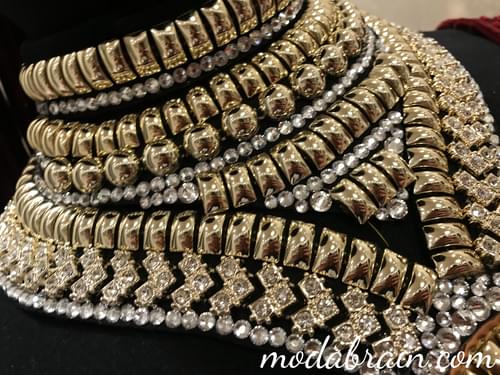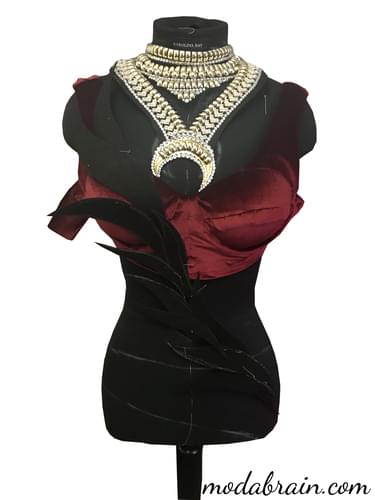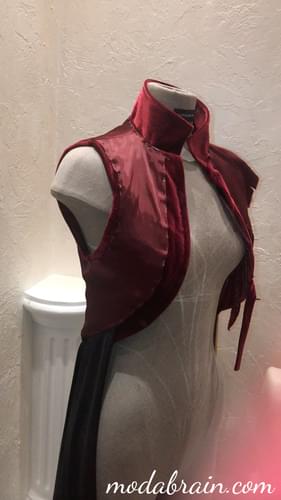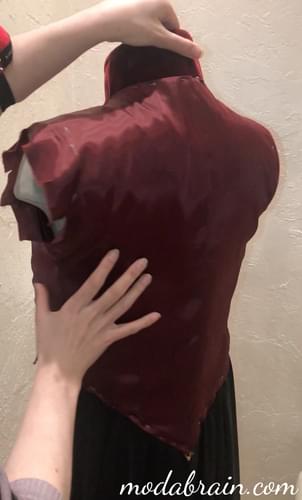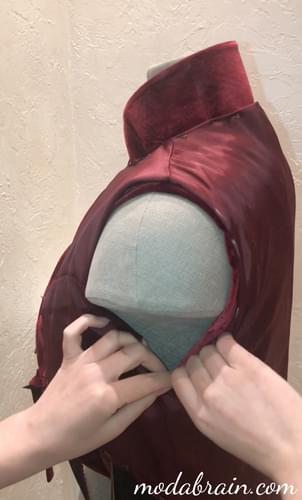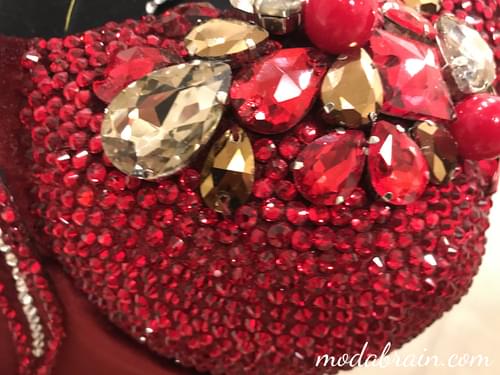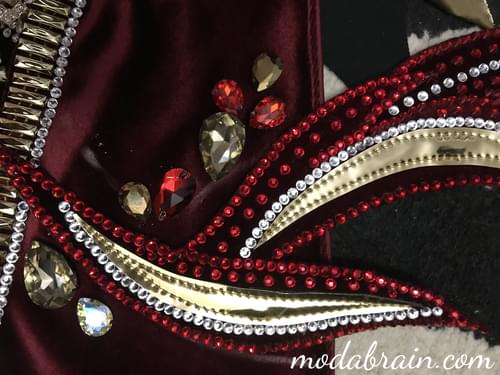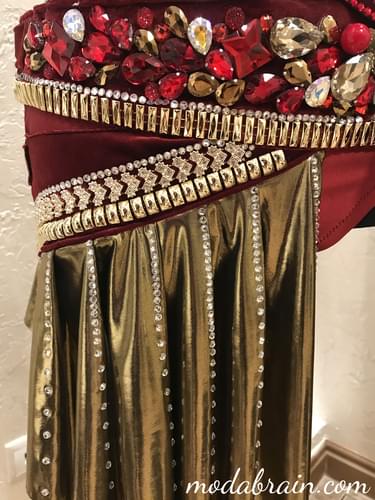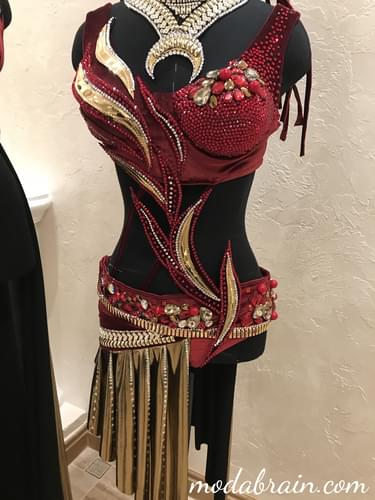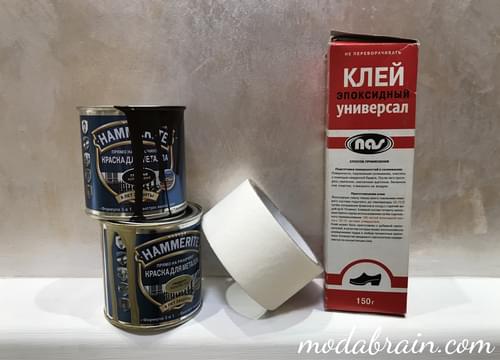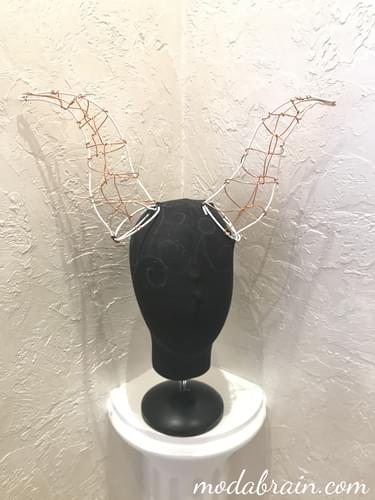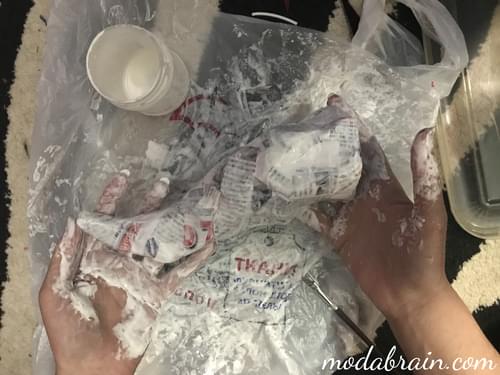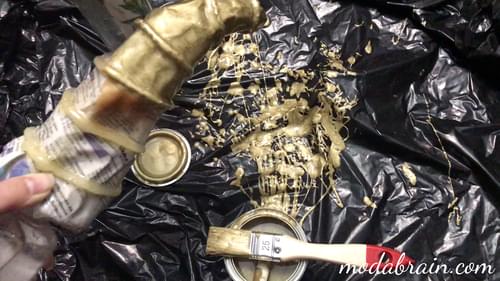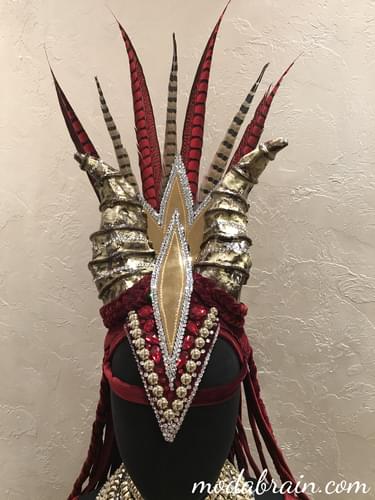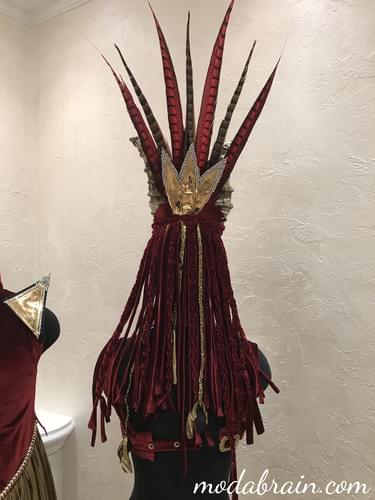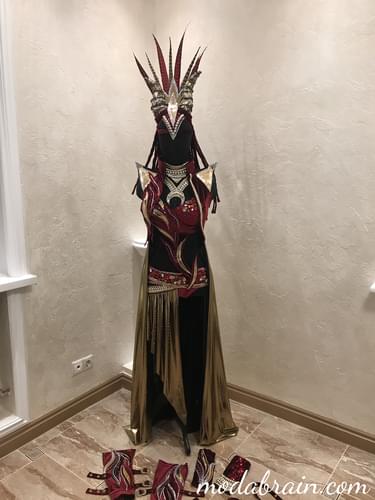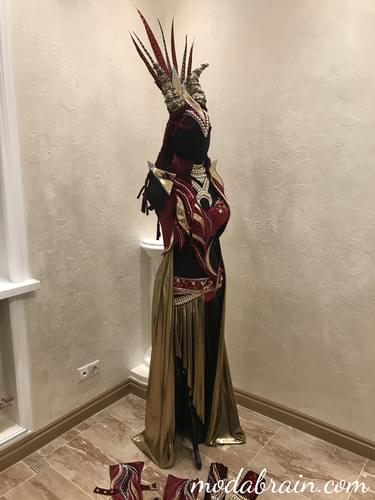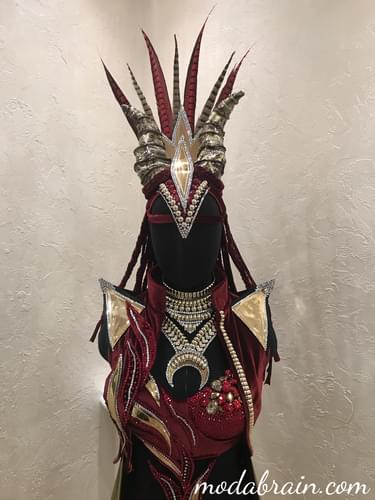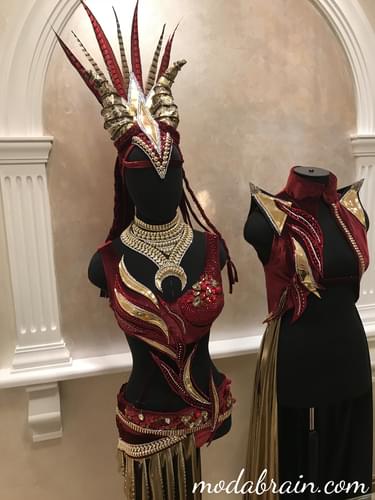
In this article I will tell and show how to come up with and sew step by step a chic and a little wild costume for a wolf trainer. I will also show you how to make horns for a headdress with your own hands and tell you what materials I used.
Creating a circus costume is a long and difficult job. Since in a circus costume the artist should not only be comfortable walking or sitting, but also doing various tricks, the costume should not interfere with this.
Usually I offer several options for a costume. When creating a sketch, you must also take into account the peculiarities of setting the number. Since this costume was created for a wolf trainer, I wanted to make the image of the artist a little wild.
The costume was supposed to consist of several things and a headdress. Initially, I wanted to make a huge headpiece for this costume, but because of one trick when the artist becomes a handstand, I had to abandon the huge headpiece and make it smaller.
Content
- Rendering foreskets
- Drawing the final sketch
- Necklace
- Preparation of the picture
- Suit tailoring
- Creating a headdress
Drawing foreskets
The first stage of tailoring is drawing foreskets. Foreskiz is a sketch of the future costume. Most often I make them with an ordinary simple pencil, in a rare case I mark the possible colors on the sketch. And before showing the foreskets to the customer, I go to the fabric store and select fabric samples from which the future suit can be created and take pictures for the customer of fabrics and accessories that can be used in the suit.
Drawing the final sketch
After agreeing with the customer on the details of the costume: color, fabrics, accessories, approximate number of rhinestones, etc., I proceed to drawing the final color sketch. My costume will consist of: a bodice, shorts, a belt with a skirt, a cloak, leggings, cuffs, a headdress, a necklace, a small bag for lure for wolves.
Necklace
Before moving on to costume patterns and tailoring, I decided to make a necklace from the beginning. From felt 0.2 mm thick, I cut out the base on which I laid out the decor from plastic braid. I used three types of braid and rhinestones.
Preparation of the picture
I don’t always build a suit on graph paper. In many cases, it is easier to create a stage costume using a dummy method (by pinning mock-up fabric on a mannequin). I created the patterns for this costume using the dummy method.
Suit tailoring
After preparing the patterns, I proceed directly to the tailoring of the costume. We chose the main fabric: burgundy velvet and gold-plated lycra as an addition.
The basis of the decorative petals I had was the same felt as the necklace. I treated some petals with velvet.
One part of the bodice is decorated with decorative petals, and the second part of the bodice is richly decorated with small glue rhinestones and large sewn-on rhinestones of various shapes.
On the belt, I used the same plastic braid as on the necklace and also richly decorated with rhinestones.
Creating a headdress
For the headdress, I had to make horns. For this, I needed PVA glue, paper, wire, masking tape, epoxy glue, gold and brown paint for metal.
First, I made the base for the horns out of wire. Then I wrapped it in masking tape.
After that, I cut the paper into small rectangles, dipped them in PVA glue and applied them to the horns, that is, I made papier-mâché.
After the glue had dried, I applied a single layer of epoxy glue to the antlers. After complete drying, you can take on the paint. I completely covered the horns with gold paint, and with the help of brown paint I gave depth and shadow to the horns.
After I made the base on which the horns and feathers were to be attached. I used pheasant feathers, brown and red. And I also cut the velvet into strips and braided them into pigtails.
Our costume is ready and sent to its happy owner.
In the process of tailoring a suit, it happens that I doubt some detail that I drew on the sketch. In this case, the cloak turned out to be such a detail. By the end of the tailoring, I began to doubt whether a raincoat was needed at all? But when the costume was ready and I put everything on the mannequin, I realized that my doubts were superfluous and the cloak completed the image very harmoniously. Moreover, the customer liked this cloak so much that she ordered another such cloak, only completely gold, so that it would fit with all her other costumes.
Thank you for reading my article. I hope that it will be useful to you and you will be able to make such, and maybe even better, a costume for yourself according to my instructions ![]()

